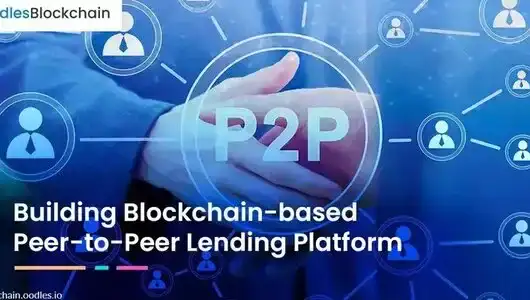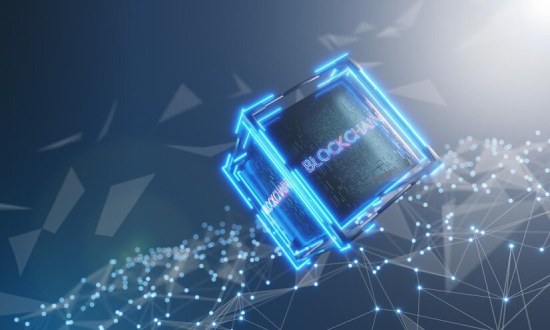-
In today's fast-changing financial landscape, Peer-to-Peer (P2P) lending has become a game-changer, opening up credit and investment opportunities to a wider audience. Traditional lending systems rely on banks and other intermediaries, often resulting in higher costs, slow processing, and limited access. Blockchain-powered P2P lending platforms are reshaping this model by combining cryptocurrency development with decentralized finance to create faster, more transparent, and accessible lending solutions. This article explores how these platforms work, their advantages, technical foundations, and the future they could unlock for global finance. For enterprises looking to build in this space, partnering with a trusted P2P crypto exchange development company can provide the expertise needed to design and deploy secure, scalable solutions.
Understanding P2P Lending
P2P lending is a method of debt financing that enables individuals to borrow and lend money without using traditional financial intermediaries. Instead, platforms connect borrowers directly with lenders, facilitating loans based on mutual agreements. This model offers several benefits:
- Accessibility: Broader access to credit for individuals and small businesses.
- Cost Efficiency: Reduced fees and interest rates compared to traditional banks.
- Investment Opportunities: New avenues for investors to diversify their portfolios.
However, traditional P2P lending platforms still face challenges such as trust issues, lack of transparency, and vulnerability to fraud. Blockchain technology aims to address these limitations, enhancing the overall efficiency and reliability of P2P lending systems.
Blockchain Technology Overview
Blockchain is a decentralized, distributed ledger technology that records transactions across multiple computers. Its key characteristics include:
- Decentralization: Eliminates the need for central authorities, reducing single points of failure.
- Transparency: All transactions are publicly recorded, enhancing accountability.
- Immutability: Once recorded, transactions cannot be altered, ensuring data integrity.
- Security: Cryptographic techniques safeguard data against unauthorized access and tampering.
These features make blockchain an ideal foundation for enhancing P2P lending platforms by introducing greater trust, security, and efficiency.
Also, Read | AI-Based P2P Lending Platform Development
Integrating Blockchain with P2P Lending
Integrating blockchain technology into P2P lending platforms transforms the traditional lending process by:
- Smart Contracts: Automating loan agreements, ensuring that terms are executed precisely without the need for intermediaries.
- Decentralized Identity Verification: Enhancing the onboarding process by securely managing borrower and lender identities.
- Transparent Ledger: Providing a clear, immutable record of all transactions, fostering participant trust.
- Tokenization: Enabling the creation of digital assets that represent loans, facilitating easier transfer and investment.
This integration not only streamlines operations but also introduces innovative financial instruments, making the lending process more efficient and secure.
Key Features of Blockchain P2P Lending Platforms
Smart Contracts
Smart contracts are self-executing contracts with the terms directly written into code. They automate loan agreements, ensuring that repayments are processed automatically based on predefined conditions. This reduces the need for manual intervention, minimizing errors and delays.
Decentralized Governance
Blockchain P2P lending platforms often employ decentralized governance models, allowing stakeholders to participate in decision-making processes. This democratic approach enhances transparency and aligns the platform's operations with the interests of its users.
Tokenization of Loans
By tokenizing loans, platforms can create digital assets that represent individual loan agreements. These tokens can be traded, pooled, or used as collateral, providing liquidity and flexibility to both borrowers and lenders.
Enhanced Security
Blockchain's cryptographic security measures protect user data and transactions from unauthorized access and cyber threats. This robust security framework instills confidence among users, encouraging greater participation.
Real-Time Auditing and Transparency
Every transaction on a blockchain P2P lending platform is recorded in real-time, allowing for continuous auditing and monitoring. This transparency helps in building trust and ensures compliance with regulatory standards.
Also, Check | Coin Lending Bots : A Time-Saving Solution for Traders
Advantages Of Traditional Lending Systems
Reduced Intermediary Costs
Eliminating traditional intermediaries such as banks and financial institutions lowers operational costs, resulting in lower interest rates for borrowers and higher returns for lenders.
Increased Accessibility
Blockchain P2P lending platforms are accessible to a global audience, breaking down geographical barriers and providing opportunities for underserved populations to access credit and investment options.
Enhanced Trust and Transparency
The immutable and transparent nature of blockchain ensures that all transactions are verifiable and traceable, reducing the risk of fraud and enhancing trust among participants.
Faster Processing Times
Automation through smart contracts accelerates loan approval and disbursement processes, enabling quicker access to funds compared to traditional lending systems.
Improved Credit Assessment
Blockchain platforms can leverage decentralized data sources and analytics to provide more accurate and comprehensive credit assessments, facilitating better decision-making for lenders.
Technical Architecture
Blockchain Network
The backbone of a blockchain P2P lending platform is its underlying blockchain network, which can be either public, private, or consortium-based. The choice of network influences the platform's scalability, security, and governance.
Smart Contract Layer
Smart contracts handle the execution of loan agreements, automating tasks such as disbursement, repayment scheduling, and penalty enforcement. They ensure that all conditions are met before any action is taken, reducing the need for manual oversight.
Decentralized Identity Management
Secure identity management systems verify and authenticate users without relying on centralized databases. This decentralized approach enhances privacy and reduces the risk of identity theft.
Tokenization Engine
The tokenization engine creates and manages digital tokens that represent loans or other financial instruments. It facilitates the issuance, transfer, and redemption of tokens, enabling liquidity and flexibility in the lending process.
User Interface
A user-friendly interface allows borrowers and lenders to interact with the platform seamlessly. It provides access to loan applications, investment opportunities, account management, and transaction monitoring.
Integration APIs
APIs enable integration with external services such as credit bureaus, payment gateways, and regulatory compliance systems. This ensures that the platform can interact with existing financial infrastructure and adhere to regulatory requirements.
Also, Discover | Unlocking Value: Exploring the World of NFT Lending
Security and Compliance
Data Encryption
All sensitive data on the platform is encrypted using advanced cryptographic techniques, safeguarding it from unauthorized access and cyber threats.
Multi-Factor Authentication (MFA)
Implementing MFA adds an extra layer of security, ensuring that only authorized users can access their accounts and perform transactions.
Regulatory Compliance
Blockchain P2P lending platforms must adhere to relevant financial regulations, including KYC (Know Your Customer), AML (Anti-Money Laundering), and data protection laws. Automated compliance checks can be integrated into the platform to ensure ongoing adherence to legal standards.
Decentralized Auditing
Regular audits are conducted through decentralized mechanisms, leveraging the transparency of the blockchain to verify the integrity and accuracy of transactions and platform operations.
Security Protocols
Robust security protocols are implemented to protect against common threats such as DDoS attacks, phishing, and smart contract vulnerabilities. Continuous monitoring and updating of security measures are essential to maintain platform integrity.
Use Cases and Industry Applications
Personal Loans
Individuals can obtain personal loans directly from lenders without the need for bank intermediaries, benefiting from lower interest rates and faster approval processes.
Small and Medium Enterprises (SMEs)
SMEs often face challenges in securing financing through traditional channels. Blockchain P2P lending platforms provide an alternative avenue for obtaining capital, fostering business growth and innovation.
Real Estate Financing
Tokenization of real estate loans allows investors to participate in property financing, enabling fractional ownership and increased liquidity in the real estate market.
Student Loans
Blockchain-based P2P lending can offer more flexible and accessible student loan options, reducing the financial burden on graduates and promoting higher education accessibility.
Supply Chain Financing
Businesses can leverage blockchain P2P lending platforms to secure financing for supply chain operations, ensuring smoother transactions and improved cash flow management.
Also, Discover | NFT Lending and Borrowing | When NFT Meets DeFi
Challenges and Solutions
Regulatory Uncertainty
Challenge: Navigating the complex and evolving regulatory landscape can be daunting for blockchain P2P lending platforms.
Solution: Engaging with regulatory bodies, implementing robust compliance frameworks, and staying abreast of legal developments can help platforms navigate regulatory challenges effectively.
Scalability Issues
Challenge: As user bases grow, maintaining scalability and performance becomes critical.
Solution: Utilizing scalable blockchain solutions such as Layer 2 protocols, sharding, and efficient consensus mechanisms can enhance the platform's ability to handle increased transaction volumes.
User Adoption
Challenge: Encouraging users to adopt new technology can be difficult, especially among those unfamiliar with blockchain.
Solution: Investing in user education, creating intuitive interfaces, and demonstrating clear value propositions can drive user adoption and trust in the platform.
Security Risks
Challenge: Despite blockchain's inherent security, platforms are still susceptible to vulnerabilities and attacks.
Solution: Implementing comprehensive security measures, conducting regular audits, and fostering a culture of security awareness are essential to mitigate risks.
Integration with Traditional Systems
Challenge: Seamlessly integrating blockchain platforms with existing financial systems and services can be complex.
Solution: Developing robust APIs and collaborating with traditional financial institutions can facilitate smoother integration and interoperability.
Future Prospects
The integration of blockchain technology into P2P lending platforms is still in its nascent stages, but the potential for growth and innovation is immense. Future developments may include:
- Decentralized Finance (DeFi) Integration: Enhanced interoperability with DeFi protocols, enabling more complex financial products and services.
- AI and Machine Learning: Leveraging AI for advanced credit scoring, fraud detection, and personalized lending solutions.
- Global Expansion: Increasing cross-border lending opportunities, fostering global financial inclusion.
- Sustainability Initiatives: Facilitating green loans and sustainable investment opportunities through transparent and accountable platforms.
- Enhanced Privacy Features: Implementing advanced privacy-preserving technologies such as zero-knowledge proofs to protect user data while maintaining transparency.
As blockchain technology continues to mature, its application in P2P lending is poised to redefine the financial landscape, making lending more accessible, efficient, and secure for businesses and individuals alike.
You might be interested in | Developing P2P (Peer-to-Peer) Lending Platform with Blockchain
Conclusion
Blockchain P2P lending platforms represent a significant leap forward in the evolution of financial services. By leveraging the decentralized, transparent, and secure nature of blockchain technology, these platforms address many of the limitations inherent in traditional lending systems. From reduced costs and increased accessibility to enhanced security and transparency, the benefits are manifold. While challenges such as regulatory compliance and user adoption remain, ongoing advancements and collaborative efforts within the industry are paving the way for widespread adoption. As we look to the future, blockchain-based P2P lending is set to play a pivotal role in shaping a more inclusive and efficient financial ecosystem. If you are planning to build your p2p lending platform using blockchain technology and cryptocurrencies, connect with our blockchain developers to get started.
Frequently Asked Questions (FAQs)
What is a Blockchain P2P Lending Platform?
A Blockchain P2P lending platform is a decentralized marketplace that connects borrowers directly with lenders using blockchain technology. This integration ensures transparency, security, and efficiency in the lending process by eliminating traditional intermediaries.
How do Smart Contracts Work in P2P Lending?
Smart contracts are self-executing agreements with terms coded into them. In P2P lending, they automate the loan process by handling tasks such as disbursing funds, managing repayments, and enforcing penalties, ensuring that all conditions are met without manual intervention.
What are the Benefits of Using a Blockchain P2P Lending Platform?
Benefits include reduced intermediary costs, increased accessibility, enhanced transparency and trust, faster processing times, improved security, and the ability to tokenize loans for greater liquidity and flexibility.
Are Blockchain P2P Lending Platforms Secure?
Yes, they employ advanced cryptographic techniques, decentralized identity management, and robust security protocols to protect user data and transactions. However, like any technology, they are not immune to risks and require continuous security measures.
How Do Blockchain P2P Lending Platforms Ensure Compliance with Regulations?
They integrate compliance frameworks within their architecture, including KYC (Know Your Customer) and AML (Anti-Money Laundering) procedures. Automated compliance checks and regular audits help ensure adherence to relevant financial regulations.
Can Blockchain P2P Lending Platforms Be Used Globally?
Yes, one of the key advantages is their global accessibility, allowing users from different regions to participate in lending and borrowing activities, thereby promoting financial inclusion on an international scale.
What Types of Loans Can Be Offered on Blockchain P2P Lending Platforms?
Various types of loans can be facilitated, including personal loans, business loans for SMEs, real estate financing, student loans, and supply chain financing, among others.
How Does Tokenization Enhance P2P Lending?
Tokenization transforms loans into digital assets, enabling them to be easily traded, transferred, or used as collateral. This increases liquidity, provides flexibility to investors, and allows for fractional ownership of loans.
What Challenges Do Blockchain P2P Lending Platforms Face?
Challenges include regulatory uncertainty, scalability issues, user adoption hurdles, security risks, and the complexity of integrating with existing financial systems.
What is the Future Outlook for Blockchain P2P Lending?
The future is promising, with potential advancements including deeper integration with DeFi, the use of AI for enhanced credit assessments, global expansion, sustainability-focused lending, and improved privacy features, all contributing to a more inclusive and efficient financial ecosystem.

Our Offices
INDIA
Emaar Digital Greens, Sector 61,
Gurugram, Haryana
122011.
Welldone Tech Park,
Sector 48, Sohna road,
Gurugram, Haryana
122018.














